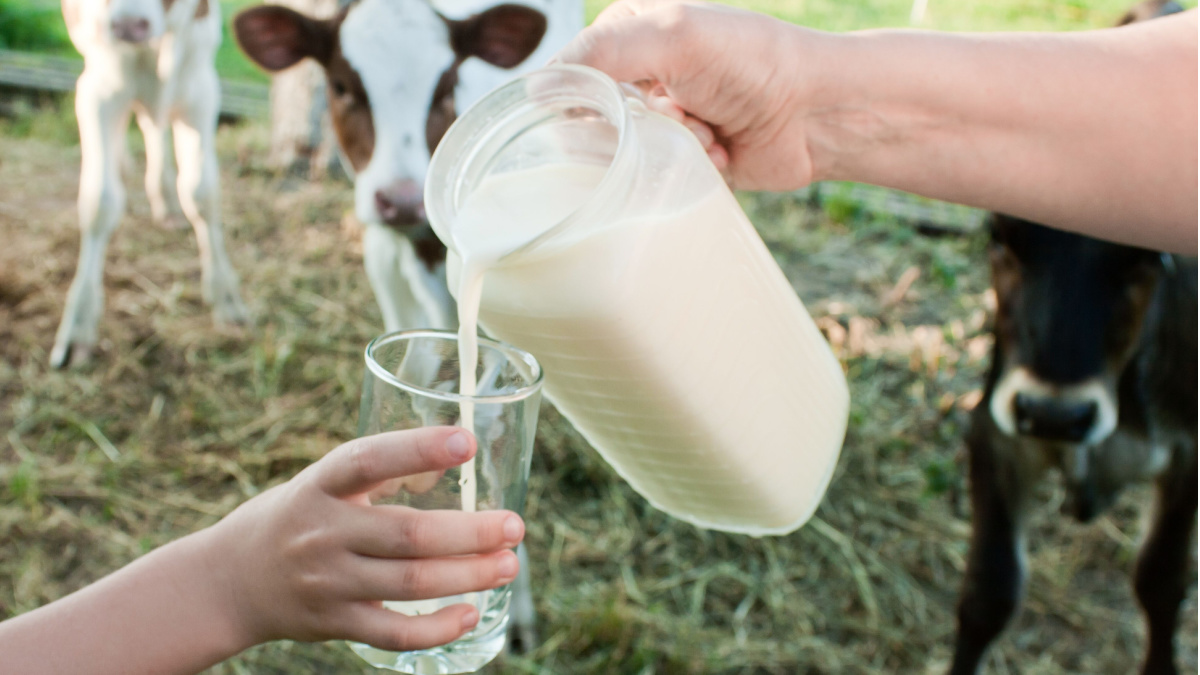Raw drinking milk - state of play

Nutritional superfood or public health hazard? Or perhaps a combination of both? Nick Hughes outlines the current state of play.
Nutritional superfood or public health hazard? Or perhaps a combination of both? These are the questions that have dominated debate around raw drinking milk for years. Banned in Ireland as recently as 2006, raw milk for human consumption has been gaining popularity in recent times among consumers who believe it has stronger nutritional properties than conventional, pasteurised milk. Supporters claim drinking it can boost consumption of key nutrients and lead to reduced incidence of certain health conditions and allergies in children.
For regulators, raw milk remains an inherently risky product that poses particular dangers to specific groups of people – namely children, pregnant women, older people or those who are unwell or have chronic illness.
But gold-standard evidence supporting such claims is thin on the ground. For regulators, raw milk remains an inherently risky product that poses particular dangers to specific groups of people – namely children, pregnant women, older people or those who are unwell or have chronic illness.
Given the concerns of regulators why then does it remain legal to sell raw milk in Ireland, England, Wales and Northern Ireland (Scotland has banned it since 1983)? In a word: balance. Opposition to raw milk centres on evidence that unpasteurised milk can carry bacteria such as Salmonella, E. coli and Listeria at levels that pose a danger to public health. But the UK Food Standards Agency (FSA) concluded back in 2020 that the risk is not so unacceptable as to justify removing the right of adult consumers to choose to drink it. For all their concerns over the possible safety risks, regulators are mindful that there is a significant cohort of the public that wants the option to drink raw milk through legal channels. Research by the FSA published in 2018 (the latest available data) found that the proportion of the population consuming raw drinking milk had increased from 3% of the population in 2012 to 10% of the population in 2018. A typical consumer was likely to be under 45 years old, from within the ABC1 socioeconomic group and from England. Farmers have responded by supplying more raw drinking milk – 135 producers are currently registered across England, Wales and Northern Ireland – up from 108 in 2012.
"There are stricter hygiene standards for farms selling raw drinking milk direct to consumers and these farms are inspected more frequently than those producing milk to be pasteurised. These controls aim to ensure that raw drinking milk is safe for people to consume whilst balancing consumer choice.”
Given burgeoning demand for raw drinking milk alongside a growth in production, a compromise position has developed whereby controls are tight on its production and information on the risks of consumption are made clear to consumers at the point of purchase, but the product itself is permitted to be sold direct to the consumer by registered businesses (not via a third-party seller like a supermarket). “The FSA considers raw drinking milk to be a risky product,” says Callum Stewart, senior policy manager at the FSA. There are stricter hygiene standards for farms selling raw drinking milk direct to consumers and these farms are inspected more frequently than those producing milk to be pasteurised. These controls aim to ensure that raw drinking milk is safe for people to consume whilst balancing consumer choice.”
The Food Safety Authority of Ireland (FSAI) has adopted a similar stance. It says it continues to be of the view that milk that has not been heat-treated may contain harmful microorganisms and therefore strongly advises that, unless it is boiled first, raw drinking milk should not be consumed by children, pregnant women, older people or those who are unwell or have chronic illness.
There have been no food poisoning outbreaks associated with raw milk reported in Ireland since 2015 when an outbreak of verocytotoxigenic E. coli involving three members of a family was linked to consumption of raw milk. The evidence in that case was however not conclusive, and so the outbreak was described by the Health Protection Surveillance Centre as having weak evidence. At EU level, meanwhile, three strong evidence outbreaks linked to consumption of raw milk were reported in 2021. Regulation of raw milk is governed by a combination of EU law (EC) No 853/2004) and national legislation which, among other requirements, sets out thresholds for microbiological standards relating to plate count and coliforms. Producers are subject to routine hygiene inspections and raw milk drinking products must be labelled as having not been heat-treated and at risk therefore of containing organisms harmful to health.
In Ireland, the regulation governing raw milk has not changed significantly since 2015 when a new legal amendment in the form of a statutory instrument was introduced by the Department of Agriculture, Food and the Marine (DAFM) clarifying that farmers producing over 30 litres per week of raw drinking milk have to operate under the regulations (those selling under 30 litres are exempt). This marked a shift from the government’s position in 2011 when then agriculture minister Simon Coveney seemed set on reintroducing a ban.
Relations between producers and regulators subsequently improved to the extent that in 2018, the producers’ association, Raw Milk Ireland, published new good practice guidance for raw milk producers in conjunction with DAFM and in consultation with the FSAI, with the aim of reducing the risks associated with raw milk. On publishing the guidance, Raw Milk Ireland declared itself: “delighted to have been able to have jointly fostered a spirit of cooperation working with, rather than against, the authorities”. Building on legal requirements, the guidance includes advice on implementing strict controls across all aspects of production, as well as testing for pathogens and the provision of shelf life and labelling information. This included the provision of a new warning label that is mandatory for all producers signed up to the guidelines. It reads: “This milk has not been heat-treated and may contain harmful bacteria. The FSAI strongly advises that, unless it is boiled first, it should not be consumed by children, pregnant women, older people or those who are unwell or have chronic illness.”
In the UK, the FSA has also withheld from developing new legal requirements post EU-exit, instead favouring a guidance-led approach. Last updated in 2020, the current guidance emphasises two main controls: to have an effective and verified food safety management system (FSMS) in place (which is a legal requirement) and to commit to best practice in carrying out regular tests for those pathogens which can be found in raw milk.
As part of the validation of their FSMS, producers are advised to provide one full set of satisfactory test results to the FSA and apply a sampling and testing regime that provides ongoing assurances that the system is effective. The FSA also recommends providing extra information on storage conditions and shelf life beyond statutory requirements, and to label raw milk with the additional warning: “The Food Standards Agency strongly advises that it should not be consumed by children, pregnant women, older people or those who are unwell or have chronic illness” – a warning that is already mandatory in Wales.
Like Raw Milk Ireland, the UK-focused Raw Milk Producers Association (RMPA) welcomes the shift to greater cooperation between the raw milk industry and regulators. “We are pleased to have been engaged in constructive dialogue with the FSA throughout the process of refining the new controls, aiming to ensure they are both practical for producers and focussed on improving food safety,” said Tali Eichner, membership secretary of the RMPA on publication of the guidance. “The approach proposed by the FSA meets this need by enabling the producer to assess the risks in their own system and setting controls appropriate to their individual situation,” he added.
While compromise may have been reached over safety concerns, debate over the nutritional benefits of raw milk consumption remains far more polarised. On its website, the RMPA says, “raw milk farmers hear regularly from customers who experience an improvement in their health or a condition after switching to raw milk”. While it concedes that “unfortunately, there is not sufficient research to provide any definitive answers on any health benefits of raw milk”, it points to “a number of studies which do show a correlation between raw milk and positive health effects, or with pasteurisation and negative health effects”. These include studies that show pasteurisation reduces concentrations of some nutrients such as Vitamins E, B12, B2, C and folate and the absorption of Vitamin D and calcium, and studies that have found a correlation between drinking raw milk and reduced incidence of asthma (Raw Milk Ireland cites a study of over 8,300 children in rural parts of continental Europe which found a significant reduction in asthma development of 41% for raw milk drinkers).
Moreover, no health claim relating to raw milk has, as yet, been approved under the EU health and nutrition claims regulation. For the moment, raw milk proponents and sceptics are managing to co-exist in a way regulators believe protects public health without restricting the right of people to drink the product. The debate over raw milk’s nutritional value, by contrast, shows no sign of reaching an entente cordiale.
The RMPA also states that: “many people with diagnosed or undiagnosed milk intolerance report that they can drink raw milk without symptoms, although it isn’t clear what the mechanism is”. Other claimed benefits from raw milk consumption have included a reduction in the risk of osteoporosis and Crohn’s disease. Yet the evidential base for health and nutrition claims associated with raw milk consumption remains relatively weak. A systematic review and meta-analysis of the effects of pasteurisation on milk vitamins, and evidence for raw milk consumption and other health-related outcomes, found that the effect of pasteurisation on milk’s nutritive value was minimal because many of the vitamins are naturally found in relatively low levels. Raw milk consumption may have a protective association with allergy development, according to the analysis, although this relationship may be potentially confounded by other farming-related factors. Consumption was not associated with cancer or lactose intolerance. The authors noted that the findings should be interpreted with caution given the poor quality of reported methodology in many of the included studies.
Moreover, no health claim relating to raw milk has, as yet, been approved under the EU health and nutrition claims regulation. For the moment, raw milk proponents and sceptics are managing to co-exist in a way regulators believe protects public health without restricting the right of people to drink the product. The debate over raw milk’s nutritional value, by contrast, shows no sign of reaching an entente cordiale.
ABOUT NICK HUGHES
Nick Hughes is a freelance writer and editor specialising in food and environmental affairs. He contributes articles to specialist publications including The Grocer and Footprint and is the author of numerous reports and whitepapers on food-related issues. Nick has previously worked in advisory and policy roles for DEFRA and the World Wildlife Fund (WWF).



